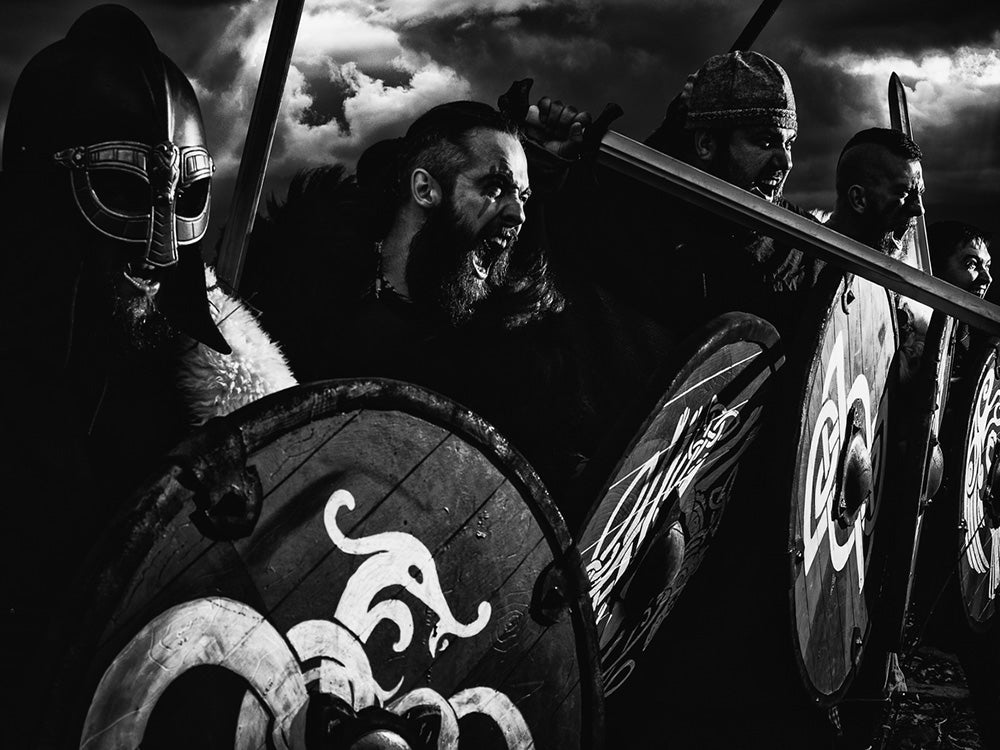
From the late 8th century until 1066, the sight of a Viking longship on the horizon was enough to strike fear into an Anglo-Saxon heart. Though it’s impossible to imagine Britain today without the impact that the Vikings left on our shores (from city building and cultural practices to shaping the English language) the relationship between Britons and the Vikings was often violent and cruel. Viking invasions were frequent and destructive, whether they were carried out by small bands of raiders or Ragnar Lothbrok’s legendary Great Heathen Army.
Scandinavians had been trading in Britain long before the start of the Viking age, but by the mid-9th century, Norsemen were already invading major British settlements and establishing puppet rule. So how did the relationship between the two civilisations go from a peaceful partnership to all-out dominance?
Murder in Portland
While Lindisfarne is usually cited as the first Viking attack in England, that’s not entirely true. Just four years before, Scandinavian sailors murdered a public official in Dorset, then part of the Kingdom of Wessex.

Bearduheard, the first known victim of Viking aggression on British shores, was a reeve on England’s south coast. The Anglo-Saxon Chronicle tells us that one day in 789, three Viking ships approached the island of Portland, and, thinking them to be traders, a local bailiff called for the reeve to collect the necessary taxes to trade in Wessex. Bearduheard rode out with a few assistants at his side, rowed to the Viking longship and asked the sailors to hand over the required sum. But the money was not forthcoming. Bearduheard was murdered and the Norsemen sailed on to trade further up the coast.
Dr David Petts, an associate professor of archaeology at Durham University, describes the murder in Portland as a ‘Viking Trojan Horse’ in that the sailors approach the shore under the guise of being traders and then get their swords out. He thinks that probably much the same thing happened at Lindisfarne. Just like the Portland reeve, the monks would not have seen sails on the horizon and panicked. ‘They might not have realised until the last moment that they’re raiders, not traders.’
Bad Omens in Lindisfarne

The first large-scale Viking attack on British shores took place on the Northumbrian island of Lindisfarne, also known as Holy Island. Lindisfarne was home to one of the most important monasteries in Britain and was credited as the place where Christianity was reintroduced in the North of England. Built in the 7th century, this was the main church and final resting place of Saint Cuthbert, an incredibly important figure in the spread of Christianity in Britain and considered at the time somewhat of an English national saint.
But Lindisfarne was more than just an isolated monastery. By some estimates it may even have been the largest Northumbrian population centre north of York. The community counted not only some 200 monks, but just as many craftsmen, fishermen and tenant farmers, many of whom lived across the causeway which connects the island to the mainland during low tide. It was a wealthy population too. The monastery's importance as a religious site was reflected in its abundance of precious relics, gold chalices and other finery, while the massive estates on the mainland would have harboured the prize possessions of wealthy traders.
But there were bad omens at Lindisfarne in 793, and the population worried about an impending catastrophe. Later scholars wrote of sightings of ‘immense whirlwinds, flashes of lightning and fiery dragons seen flying in the air.’ All this pointed to a violent disruption coming for the island; one so shocking that it would bring about a whole new age.
Attack on Holy Island

On Friday the 8th of June 793, Lindisfarne was attacked by Viking raiders who sailed in from Denmark. This was the first large-scale Norse attack on British soil and was a shocking escalation of the trading relationship that Britons and Scandinavians had known in the past.
Perhaps 100 Viking raiders sprung from three or four longships to ravage and pillage the island. The Anglo-Saxon Chronicle describes that ‘woeful inroads of heathen men destroyed God’s church in Lindisfarne by fierce robbery and slaughter.’ It’s impossible to know the exact number of casualties, but several monks were murdered and many more were carried off to Scandinavia as slaves.
However, almost more shocking to the Christian community of Lindisfarne was the theft and destruction of religious treasures. Relics and ornaments were stolen, including the jewelled cover of the Lindisfarne gospels, one of the most important English Medieval manuscripts. The tomb of Saint Cuthbert was also robbed and left in a state of disarray.
Shocking News
News of the Viking raid on Lindisfarne quickly spread throughout Northumbria and beyond. The most influential commenter was Alcuin, a Northumbrian-born advisor to Charlemagne, who wrote to Bishop Higbald to express his dismay that such a thing could happen in one of the holiest places in England. Alcuin was also keen to get to the bottom of the cause of the attack. Believing it to be a punishment from God, he urged the bishop to impress on the monks the importance of praying, not wearing fancy clothes and staying chaste and sober.
In his letters, he also hinted that depravity in wider Northumbrian society may have angered God. The kingdom was in a state of political volatility. Just a few years before, the King Ælfwald of Northumbria had been murdered and the body of the killer had been buried on Lindisfarne. While Alcuin believed that the attack may have been a divine punishment on the king’s assassin and the monks who had given him a Christian burial, the Vikings may well have seen the same events as an opportunity to capitalise on instability in the kingdom and loot one of its richest monasteries.



